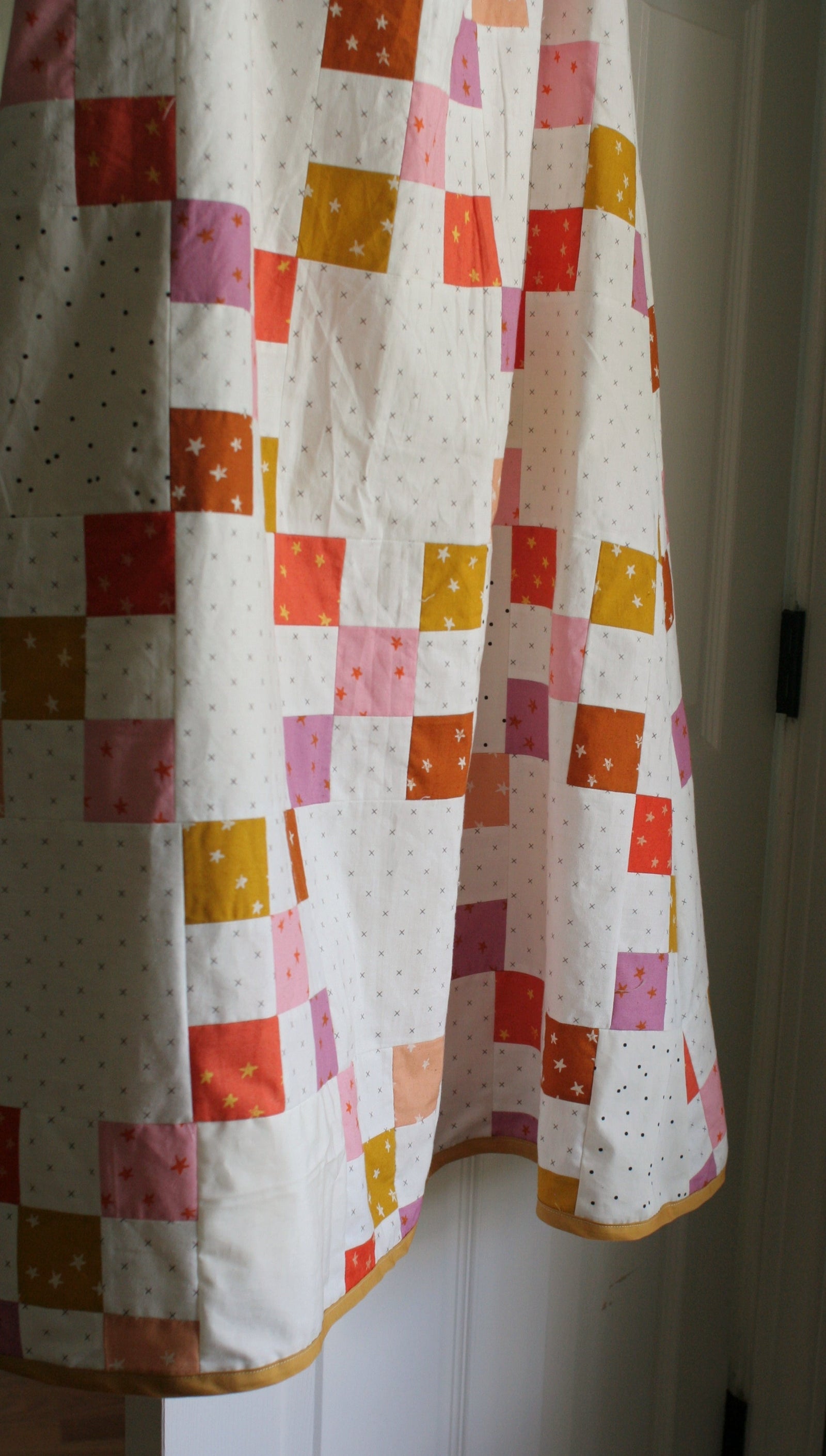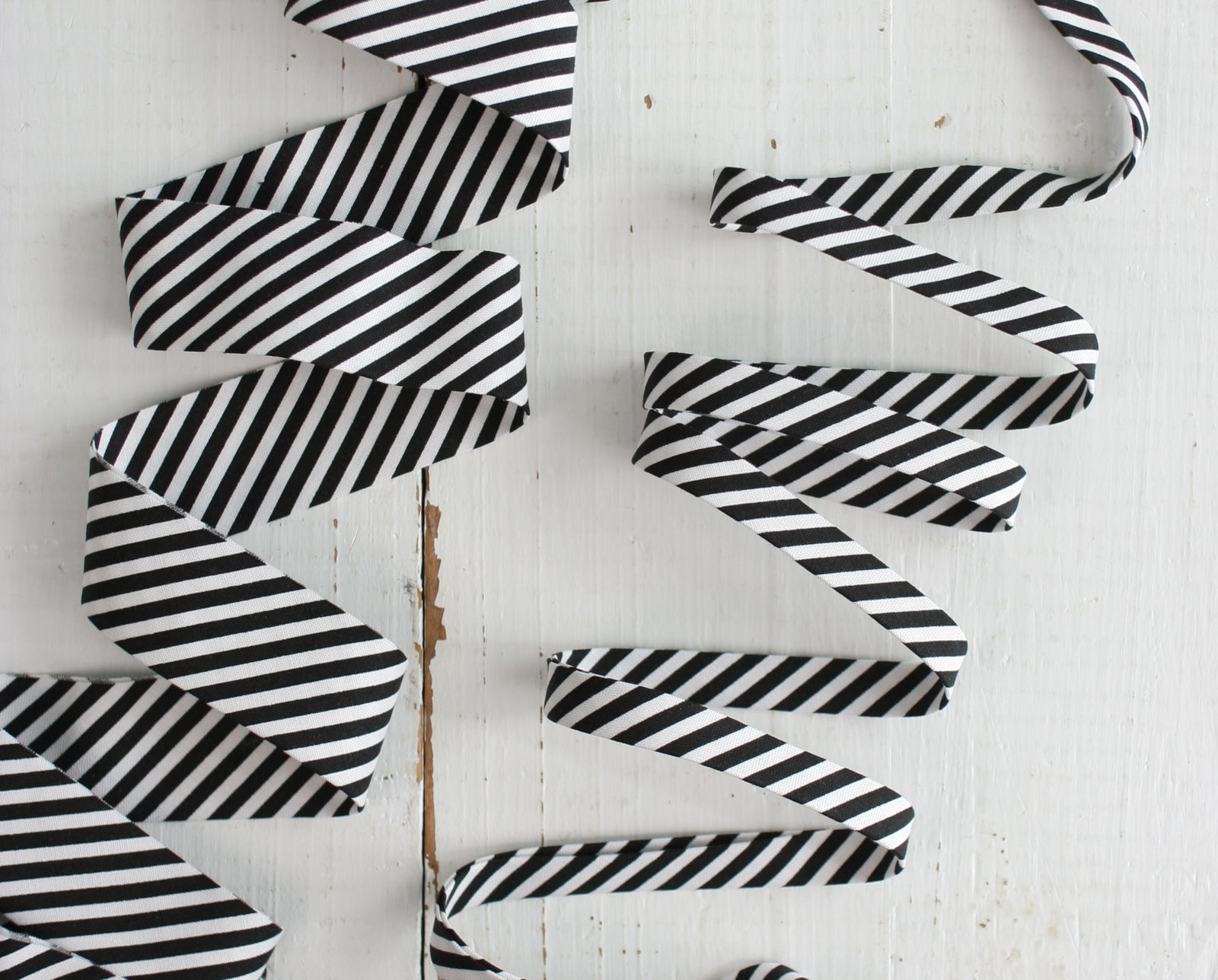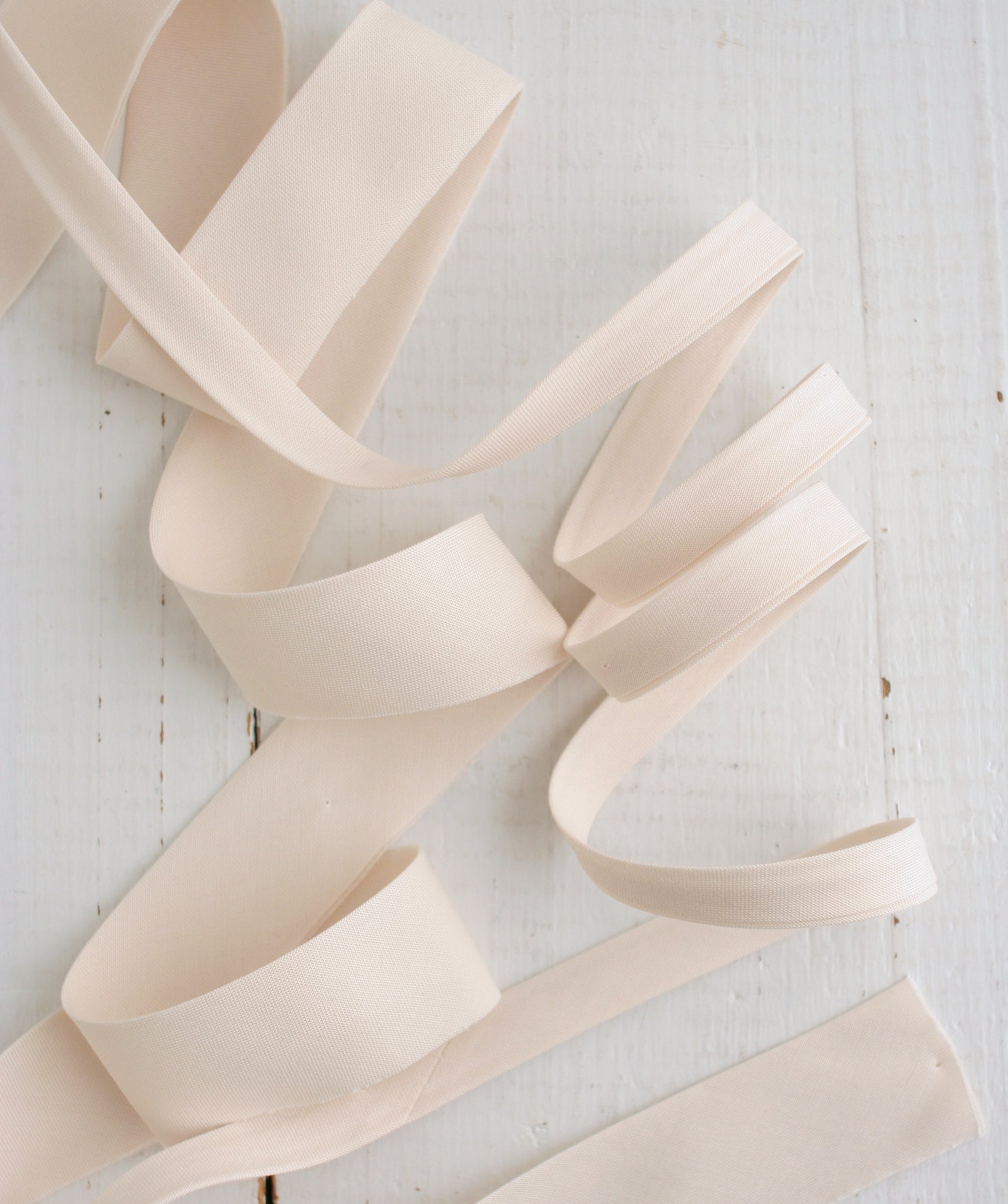Aka – everything you never knew you wanted to know about bias binding.
Aside from the strange looks I get from people when they ask me what my job is, (You make quilt binding? That’s...interesting.” Insert awkward pause.) I also often get asked about why someone should use bias binding? Do I prewash my fabrics? The ever popular – will my order ship as one continuous binding?
SO here we go – everything you never knew you wanted to know about bias binding.
What IS bias binding exactly?
Bias binding is binding that is cut on the bias, or the 45-degree angle. Fabric is made of fibers that are woven together. When you cut those fibers straight (sometimes referred to as “on the straight grain”) that is traditional binding. Cutting them on the bias, or angle, creates bias binding.

What’s the difference between bias quilt binding and bias tape?
Over the years I’ve noticed that people use these terms almost interchangeably so here’s how I define them:
Bias quilt binding is strips that are cut on the bias and then folded in half, from top to bottom. Bias quilt binding has one finished edge and one unfinished edge.

This is bias quilt binding.
Bias tape is strips that are cut on the bias but then each unfinished edge is folded in towards the middle. That will give you single fold bias tape. Fold it in half again, from top to bottom, and you have double fold bias tape. Double fold bias tape will have no unfinished edges.

This is double fold bias tape.

This is single fold bias tape.
Why should I use bias binding instead of straight binding?
Anything that is cut on the bias will have more ease or stretch to it than a fabric that is cut on the straight grain. You come across this often when making clothing in bias cut skirts, or something with a curve like a neckline. In quilting, we often try and avoid the bias, so our seams don’t stretch out and become wonky!
However, there are benefits to using bias binding on your quilt.
- It lasts longer! Fibers cut on the bias are stronger, so your binding won’t wear out as quickly. Have you ever looked at an old vintage quilt? Often the binding shows the most wear and after all the hard work you’ve put into the quilt, you want it to hold up!
- If you have a quilt with any type of curved edge, bias binding will stretch around the curves easily and give you a clean, professional finish.

Here double fold bias tape is used to finish a neckline.
Are Bessie Pearl bindings pre-washed?
Nope. I don’t prewash anything. Is it because I’m lazy? Maybe? But I also know that because I use such high-quality fabrics, any shrinkage will be minimal and will just add to the overall crinkly and coziness of your quilt!
Where do you get your fabrics from?
All our favorite fabric companies! I mostly use Riley Blake, Robert Kaufman, and Art Gallery.
Why in the world do you spend all your time making binding?
Such a good question! I was raised by a quilter, so I learned to sew from an early age, but I picked the hobby up again right around the time my daughter was born. I saw how time consuming and tricky it could be to make bias binding and I wanted to help other sewists who were struggling with the same thing! Plus, really, any excuse to stay home and play with fabrics all day was pretty great, right?
Bessie Pearl was born out of a desire to make sewing and quilting more accessible and more fun for others without sacrificing quality. It is always my hope that our products help you enjoy the process more, get it done faster and feel good about the result!
Happy sewing!
Karen

Was this helpful? Pin this post so you can easily find it again!








